#based off of two pictures of him sitting in the hades arc
Explore tagged Tumblr posts
Text
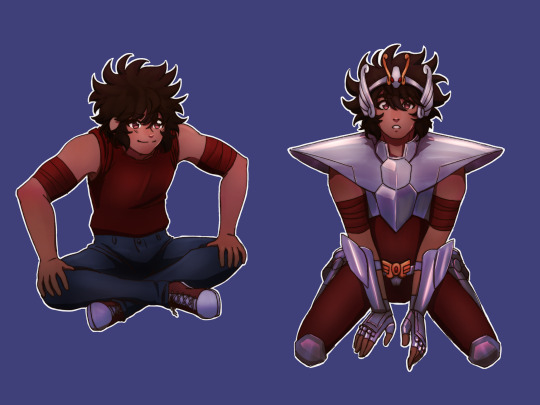
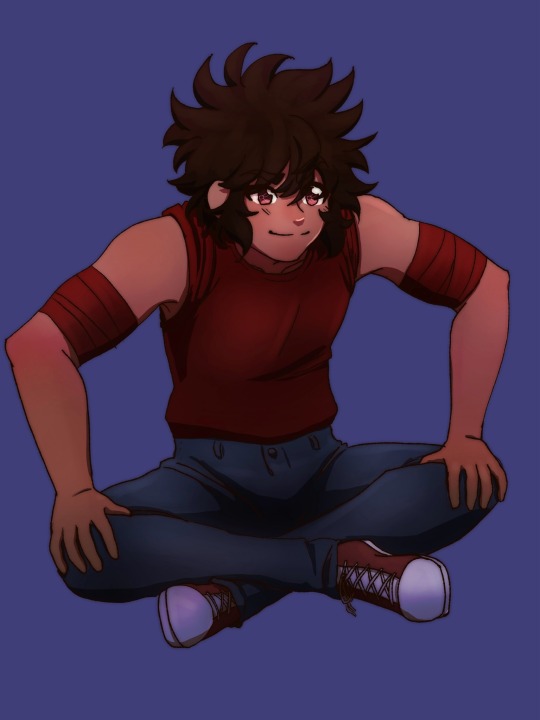

why he sit like that
#based off of two pictures of him sitting in the hades arc#he sits like an anime girl sometimes#hes just a lil guy#lil fella#silly bastard#saint seiya#knights of the zodiac#los caballeros del zodiaco#kotz#saint seiya fanart#pegasus seiya#look art
292 notes
·
View notes
Text
THE WICKED + THE DIVINE: 1923 AD AKA A WORK OF ART(IFICE)
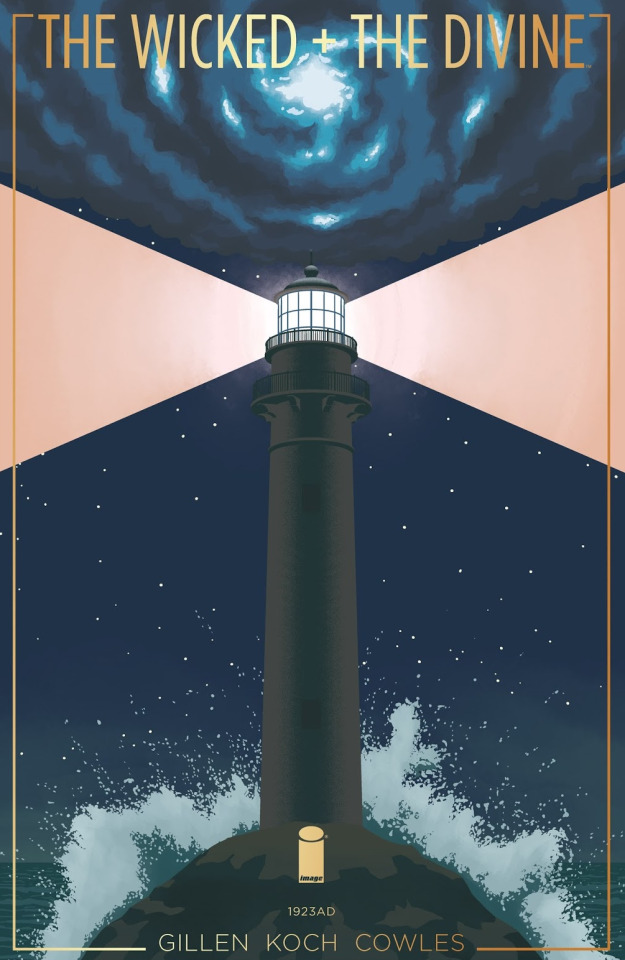
This issue is the Peakiest of Peak Gillen -- Gillen to the Power of Peak to the Power of Peak, if you will, #MathisCool. It’s a comic book masterpiece of research, reference and storytelling and I’ve been so daunted at attempting to comment on that it’s taken me months to make the attempt. You only climb Everest once, people! (Shut your mouth, Nat Geo.)
WAGNER VERSUS WARHOL, FIGHT!
In format the issue involves a back and forth conversation/rap battle between high and low art. On the one hand, we have novelistic chapters rich with description. “The island looked like a threat, a fist of rock that had forced its way through the waves.” The island and Ananke both...
Then we cut to what at first glance seems like your standard comic book, but in fact is actually a riff on the early days of film, complete with title cards (which themselves get so silly the font might as well be comic sans #IllBeHereAllWeek) and everything shot in a wash of black, white and brown, except for the splashes of red at the scenes of death—victims’ blood, Lucifer’s apple, and my favorite, the red seaweed around Neptune.

Love that red seaweed.
The heart of the plot follows a similar back and forth, as the elitist “classic” artists, the TS Eliot/Ezra Pounds and Ginny Woolf-ish-types of the Pantheon, want to kill the more popular art types, the Shirley Temples and Buster Keatons and Robert Johnstons, to initiate a nightmare scenario that will supposedly give them control over the zeitgeist of the future. It’s an incredibly disturbing take on some of the giants of the early 20th century -- and one Gillen found based in fact.
It’s fascinating, too, for as much as the real object of venom is the truly popular artists, the movie star types with their simplistic narratives and opium for the masses, the elitists focus on killing figures who from our perspective sit far closer to them – Lucifer (F. Scott Fitzgerald), Poseidon (Ernest Hemingway), Dionysius (Pablo Picasso) and the Morrigan (James Joyce). I wonder if it’s something about the chaos those specific figures represent, the way that their particular forms of art end up undermining not only the structures but internal belief system of the modern world. If Baal-Et-Al’s idea is to work with Joe Goebbels to coopt pop culture for their own We Will Keep Control project, in a sense a Picasso or Joyce was doing the reverse, presenting in the formats of the elites only to deconstruct their validity. (Gillen’s notes on the Morrigan point in this direction. Also, his description of Set as coming off “a little like Tahani from The Good Place made me laugh out loud.)
In the end our good guys will stop the bad using their own popular media, film from a train, which was in real life the very first motion picture, and terrified people back in the day for exactly the reason that they feared the train was real and was going to leap off the screen and kill them all.

Writing perfection.
HISTORY IN REPETITION AND RHYME
As we’ve seen throughout these specials, we get lots of echoes between periods here. Lucifer is once again the first one killed, the Morrigan is once again a character all about voice and drama (I love his self-narration so much, please sir can I have a spin-off?), the Norns are still trying to figure everything out, Susanoo=Dandy Baphomet, complete with his own complicated dating relationship (those rings made out of light, though, such a pristine beauty of a moment that Baph never gets), and Woden is once again a gross racist hack misogynist -- that submarine has got to be phallic, right? -- who has stolen his tech powers from someone else to produce content that is entirely derivative while secretly playing the gods and being used by Ananke.
There is also another mechanical creature, “Little Brother”, which we see only for a few panels, and that is not nearly enough because it is an adorable looking flying squid. (SCREW YOU BABY SHARK, BABY FLYING SQUID IS EVERYTHING.) Ananke also works from her standard playbook here, the Prometheus Gambit – you can gain some life if you kill others, which Baal et al will then use for bat#!% crazy purposes, which of course is also part of her plan.
And Minerva is also once again a child who seems maybe to be working with Ananke. It’s clear right from the start that the whole Shirley Temple schtick, lots of Yays and Gollys, is just an act, part of her “character”. And we get a glimpse of the real her again at the end.
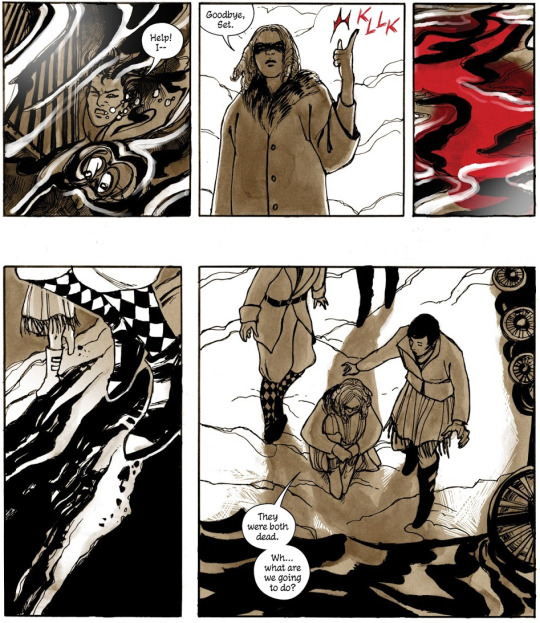
That doesn’t have to mean she’s in league with Ananke. (Just read the next arc; she’s totally in league with Ananke.) But she also comes to know what happened to Verdandi, when she wasn’t with the group that discovered him. (Dude: She’s totally in league with Ananke.) And it gives her an excuse to leave Morrigan at precisely the right moment for him to get murdered by Ananke. (Yes, exactly, because she’s in league with Ananke.) And she will kill Set herself without a second thought; it’s all still just hint and innuendo (UGH NO IT’S NOT STOP), but given what we’ve just learned in the present day that’s all we need for now.
Meanwhile Baal is in some ways the opposite of ours, a racist white elitist who dismisses James Baldwin-type Amon-Re as incapable of being an artist given his “nature”, and Set is her own thing too, a snobby name-dropping Virginia Woolf. Most intriguingly, the Norns have internal divisions that break them down, which make me worry a little bit for Cassandra and her friends.
Best take care of your family, Cassie. Remember, in #WicDiv no one is just a sidekick…
CREATURE(S) IN EBONY This is the second special where the Fall of the Gods involves the introduction of a new being created by the gods by way of a classic Ananke “Definitely Don’t Do This (wink wink)”. In 1831, Lucifer and Morrigan resurrect Hades to create an energy vampire that after killing them merged with Woden Shelley to create Steam Punk Elsa. This time the being – again a woman – is described as “looking like some ancient ancestor of the Metropolitans, but made of living poetry and bleak lightning rather than simple metal.” Which sounds an awful like the 1831 Creature.
She also emerged from “an ebony luminescence with streaks of blue beyond blue”, which again, sounds a lot like Mary Shelley Elsa Frankenstein.
Almost 92 years later we’ve heard nothing from her. But Kieron never forgets anything, INCLUDING YOUR BIRTHDAY, SO WATCH OUT. What could this all possibly mean…
ANANKIERON CHRISTIE
For me the most interesting element of 1923, though, is everything to do with Ananke. We come into the special, like the last two, knowing she is our Big Bad (probably, I don’t know you guys, I think in the next arc Kieron’s going to make me feel bad for her and I don’t want to). (No worries, he didn’t, or did he, wait, there are two Anankes now, I don’t know, what?)
But here for the first time we enter into the story alongside her. In fact, in that very first shot it almost seems like she’s looking right at us.
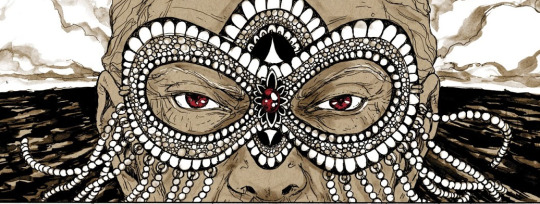
Time’s running out, she’s got to get to the murder-y and behead-yness stat, and this time we get to watch her do it. Awesome!
It’s almost like we’re partners in the exercise, even; right before they’re about to go in for dinner and discover Lucifer Ananke seems to stop and look at us again.
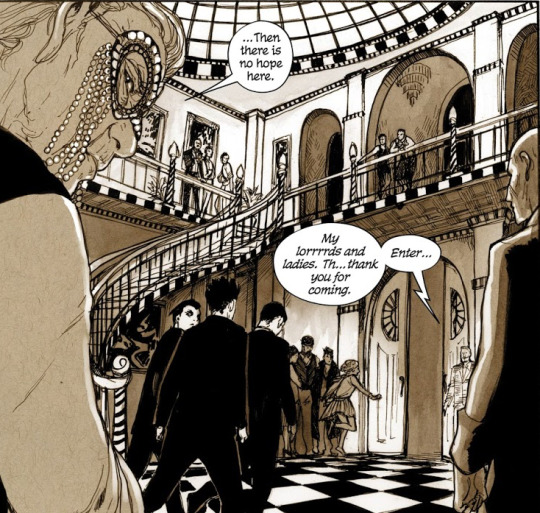
Us and the millennia-old serial killer of children--High fives all around!
For the last 30+ issues I’ve been asking why Ananke is she always wearing a mask, and now finally I get it: just like the Pantheon, she is an actor giving a performance.
Here specifically she presents herself as a classic Agatha Christie protagonist, finding herself along with everyone else in the Remote Place version of a locked room murder mystery and slowly working to uncover the truth of what’s going on while others continue to die. And Then There Was Fun!
Except in fact Ananke is not The Marple but Christie herself, author of the entire series of events that happen, which makes this to my mind pretty much the greatest Christie story ever, and also reinforces the belief of All of Us that Jessica Beatrice Fletcher is the Greatest Fictional Serial Killer that Ever Lived.
But wait, though. Doesn’t that make Ananke basically…a writer? Like um, this guy…?

But that’s crazy. We’ve spent the last five years with him. He’s fine.
I mean yes, both he and Ananke fashion fictional Big Bads (Note: this issue has absolutely no trace nor mention of a Great Darkness, despite the fact that this entire Pantheon has been around almost to their Use By) and also Ways to Save the World which motivate the characters down paths which lead to their eventual destructions.
And okay, true, in this issue Kieron does spotlight/ridicule parts of the storytelling mechanic, the machines characters are always trying to find/build/repair as nonsense.
Such rituals are actually simple. It is about will and art. The machines…in my experience, they are little more than props. All that matters is your action and intent. They killed so the world would die. You die so the world can live.
But still, if we were to accept that Ananke is Just Kieron’s, er, Mask, then it’s like this whole time he’s been the one doing terrible things to all these characters, including the characters that he made me want to love.


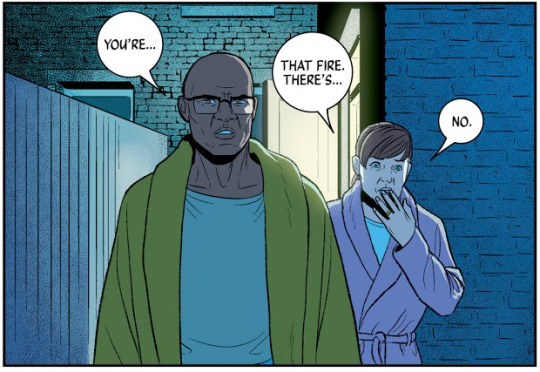
And then this question which I’ve been chewing on since 455 AD, whether the characters can ever be free of the roles they’ve been assigned, in a sense becomes a question about whether they can ever escape not Her but Him…
Or what about us? The Audience. The ones that Jamie and Kieron and the others are creating this for.
This isn’t And Then There Were None, is it? No, this is Temple of Doom. Kieron may be Mola Ram, but I’m the Ever-Hungry, Never-Satisfied G--D-- Kali.
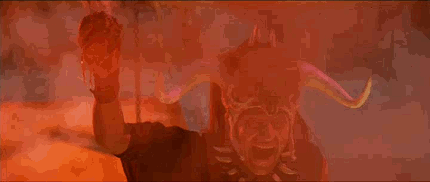
All along, Kieron has thrown in these moments where we get glimpses of the broader world, the way it feeds on the Pantheon. And I can get to the end of 1923 AD and say there’s a fascinating battle going on here about the ethics and/or violence of being a writer. But maybe there are also deeper questions being asked of me as a reader.
Maybe the issue begins with Ananke looking at me like that for a reason.
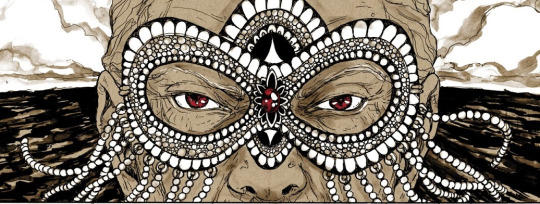
STOP IT, ANANKE. YOU’RE MAKING ME UNCOMFORTABLE. LOOK AWAY.
WORLD WARS, IRL AND URL A last point: 1923 AD is unusual for the degree to which it is haunted by something external, aka war. Even as the story takes place in the effervescent champagne bubble oasis of the Roaring 20s, both the nightmare that was World War I and the possibility of another war which is somehow impossibly much much worse than it hangs over the characters. That’s an insightful take on the period, but also an awe-full twist on the sense of doom that we’ve witnessed in the 21st century Pantheon, their own personal oncoming catastrophes expanded to the scale of disaster for the whole world.
It makes me wonder whether the last act of The Wicked + The Divine will involve something of a similar scale, whether the underlying momentum of the book has not always been toward the culture of celebrity, insofar as it engenders adoration, mob-think and a lack of fundamental care for and curiosity in one another, as sign of our own massive social crisis. (See: Brexit. Trump. The Fights My Dad Gets in on Facebook.)
Are we doomed? Do I still have time to tweet a thread about it? I really think it could make a difference, you guys.
3 notes
·
View notes